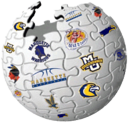As the seven non-football schools breaking away from the Big East, one change will be how Marquette handles non-conference scheduling. Over the past five years, Marquette played on average more than 6 teams ranked in the RPI top-25 in Big East play alone, which will be a rarity in the new conference. To make up for this, non-conference scheduling will need to fill the gaps.
I broke down the number of opponents in five RPI classes and assigned a point value to each, with the categories of top-25 (3), 26-50 (2), 51-100 (1), 101-200 (0), and 201+ (-1) over the past 5 full seasons in both conference play and non-conference play. I also broke down numbers for a 10-team "New Big East" with Xavier, Butler, and a Dayton/Creighton/St. Louis average.
The point value is clearly not exact, but it provides a rough guideline for scheduling. What it shows is that there is on average a 5-point shortfall from our current Big East conference schedule to the New Big East, which means we need to raise our average non-conference difficulty by around 5 point.
There are two other factors. You want to play at least 16 home games, which means 7 home non-conference games every year. You also want to get more nationally televised games. We averaged 4.5 nationally televised games from 2007-08 through 2011-12 and probably need to raise that to 7 or more to offset the new league's likely lessened exposure. So how do we get there?
We'll start with the non-conference tournament, which gives 4 games total, one at home. The average RPI of those 4 opponents was 234.5, 149.8, 100, and 23.5. We will also keep the Wisconsin series, and should push hard for a regular series with Notre Dame that alternates home/away with Wisconsin. The exempt tourney and these perennial series would give us 6 games, 2 at home, a +8 schedule rating, and 5 games on national television.
Now it gets tough. Of the remaining 7 games, I'm going to assume 4 home buy games against sub-200 opponents. This brings us to 10 games, 6 at home, a +4 schedule rating, and 5 games on national television.
From the last 3 games, we need 1 home game, +4 to the schedule, and 2 national games, which means all three teams should be top-100 RPI. I would hope the league will be proactive and create an annual series with another league, similar to the current Big East/SEC Challenge. Couple that with an alternating high-major home-and-home as we've done with NC State and LSU in recent years and we can assume 1 home game, +3 to the schedule, and 2 national games. For the last game I think there are two options as it cannot be a RPI drag. Either add another series against a high-major opponent or schedule a high-profile neutral site game, such as the Carrier Classic or the Jimmy V.
Breaking it all down, here's what I feel the blueprint should be:
- Exempt Tournament: 4 games
- Perennial home-and-homes: 2 games, Wisconsin and Notre Dame
- High-major home-and-home: 1 game NC State, Vanderbilt, LSU, alternating home site with...
- League Challenge: 1 game, similar to Big East/SEC Challenge
- Neutral Site: 1 game, similar to Carrier Classic, or high-major home-and-home
- Buy Games: 4 games, mid and low-major opponents
| 2007-08 | 2008-09 | 2009-10 | 2010-11 | 2011-12 | Average | |
| BE 1-25 | 6 | 7 | 6 | 9 | 4 | 6.4 |
| BE 26-50 | 3 | 0 | 2 | 3 | 4 | 2.4 |
| BE 51-100 | 1 | 5 | 5 | 0 | 4 | 3 |
| BE 101-200 | 8 | 4 | 3 | 5 | 6 | 5.2 |
| BE 201+ | 0 | 2 | 2 | 1 | 0 | 1 |
| BE Points | 25 | 24 | 25 | 32 | 24 | 26 |
| NC 1-25 | 2 | 1 | 2 | 2 | 2 | 1.8 |
| NC 26-50 | 0 | 2 | 1 | 1 | 0 | 0.8 |
| NC 51-100 | 2 | 1 | 1 | 3 | 3 | 2 |
| NC 101-200 | 1 | 3 | 2 | 1 | 4 | 2.2 |
| NC 201+ | 6 | 6 | 6 | 6 | 4 | 5.6 |
| NC Points | 2 | 2 | 3 | 5 | 5 | 3.4 |
| Total 1-25 | 8 | 8 | 8 | 11 | 6 | 8.2 |
| Total 26-50 | 3 | 2 | 3 | 4 | 4 | 3.2 |
| Total 51-100 | 3 | 6 | 6 | 3 | 7 | 5 |
| Total 101-200 | 9 | 7 | 5 | 6 | 10 | 7.4 |
| Total 201+ | 6 | 8 | 8 | 7 | 4 | 6.6 |
| Total Points | 27 | 26 | 28 | 37 | 29 | 29.4 |
| NBE 1-25 | 2 | 2 | 4 | 8 | 6 | 4.4 |
| NBE 26-50 | 4 | 4 | 6 | 0 | 0 | 2.8 |
| NBE 51-100 | 4 | 2 | 0 | 6 | 6 | 3.6 |
| NBE 101-200 | 8 | 8 | 6 | 2 | 6 | 6 |
| NBE 201+ | 0 | 2 | 2 | 2 | 0 | 1.2 |
| NBE Points | 18 | 14 | 22 | 28 | 24 | 21.2 |
| FNC 1-25 | 2 | |||||
| FNC 26-50 | 2 | |||||
| FNC 51-100 | 3 | |||||
| FNC 101-200 | 1 | |||||
| FNC 201+ | 5 | |||||
| FNC Points | 8 |

No comments:
Post a Comment